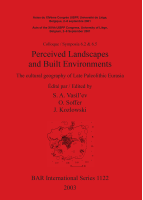Description
BOOK DESCRIPTIONUpper Palaeolithic living sites and their associated buildings have seen an increase in studies over the last few years. The focuses of these studies have been on topics such as use-wear analyses, spatial analyses of the distribution of lithic fragments and associated bone remains, as well as hearth paving. There are also geoarchaeological studies of living floors and hearths, and particular attention has been paid to the ethnoarchaeological studies of hunter-gatherer habitation sites, with many different and elaborate models of Palaeolithic cultural behaviour and ritual being put forward. The main problem with the majority of these studies in the past has been that these analyses have been restricted only upon particular sites and the immediate areas around them. Therefore the bigger picture of Palaeolithic landscape archaeology in terms of their settlement patterns is an area of study which is at best cloudy. Previous European conferences on this subject were as far back as 1982 and 1983, therefore this symposium is of particular interest as it is able to shed new light on a neglected area of research. The importance of habitation sites in Palaeolithic archaeology is used to address a number of behavioural ideas and theories, including social and cultural life in this period, and subsistence strategies. The 16 papers in this BAR investigate the way spatial distributions of remains allow the functions of particular sites to be theorised, for instance whether these were seasonal hunting camps or permanent settlements. The first part of this study covers basic contributing factors to the study of Upper Palaeolithic Dwellings, with the second part focusing on the analyses of groups of sites at a local regional level.











